Overview of the Malaysian Automotive Industry and its future transformation
December 10, 2020
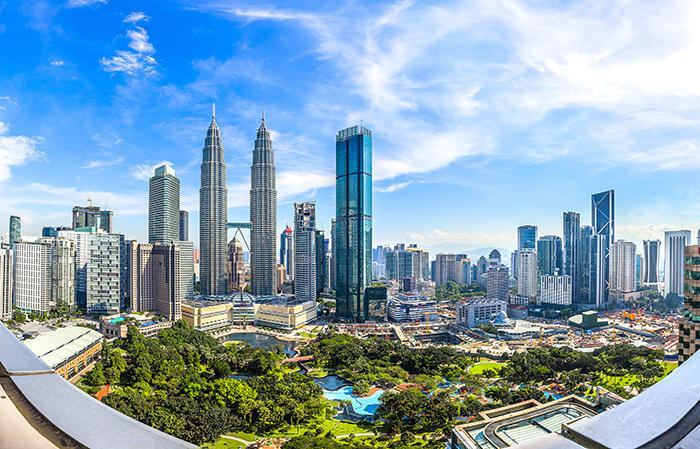
●The Automotive Industry in Malaysia
Since the first domestic automobile "PROTON" was manufactured in 1983, the automotive industry has become one of the major industries supporting the Malaysian economy. Currently, there are more than 20 manufacturing and assembly plants in Malaysia, where passenger cars, commercial vehicles, motorcycles, scooters, etc. are manufactured. In 2019, the total number of automobiles manufactured and assembled was approximately 572,000 for passenger cars and commercial vehicles. In Southeast Asia, Malaysia is the third largest after Thailand (approximately 2 million units) and Indonesia (approximately 1.29 million units).
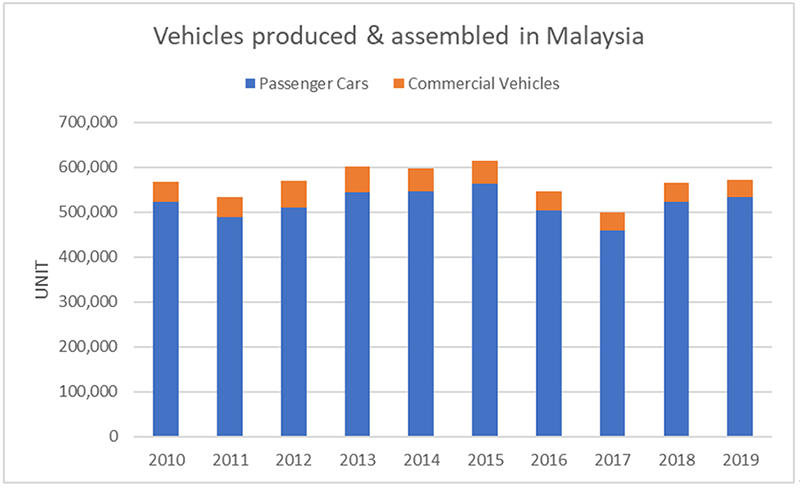
Source) Malaysian Automotive Association
●Promotion of the automotive industry through the National Automotive Policy (NAP)
Malaysia introduced the first National Automotive Policy (NAP2006) in 2006. NAP2006 set out the direction and strategy to increase the competitiveness and sustainability of the domestic automotive industry. NAP2009, the update of NAP2006, focused on strengthening the capabilities of the domestic automotive industry and creating a mechanism to promote investment. The third version of the policy, NAP 2014, focused on green initiatives and market expansion while it aimed to strengthen the entire automotive ecosystem through technological development, human capital and supply chains. The ultimate goal of NAP2014 was to establish Malaysia as a regional hub for Energy Efficient Vehicles (EEVs) by 2020. Until now, NAP, which has been policy- driven, has played a major role in promoting the Malaysian automotive industry. Newly announced NAP2020 as the fourth version has shifted from policy-driven to vision-driven policy, which promotes innovation. Recent trends in vehicle technology innovations such as autonomous driving, IoT, Cooperative-Intelligent Transportation System (C-ITS), and artificial intelligence (AI) can be game changers in existing markets. At the same time, it is also a threat for existing industries to decline if they miss the opportunities. NAP2020 has been developed from a long-term perspective in order to respond to such changes in the environment.
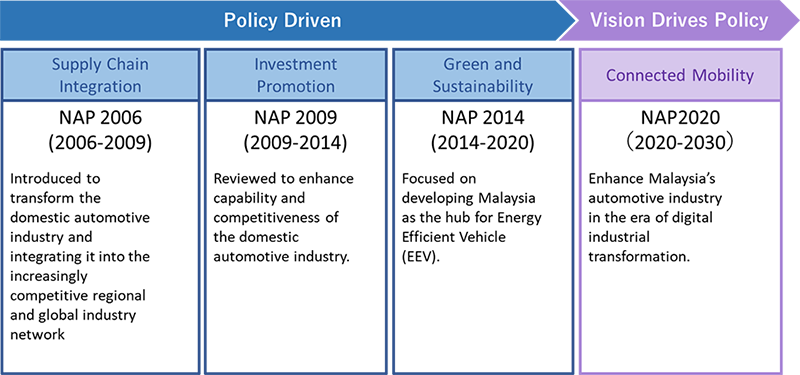
Source) Ministry of International Trade and Industry "National Automotive Policy 2020"
https://www.miti.gov.my/miti/resources/NAP%202020/NAP2020_Booklet.pdf
●NAP2020 Overview
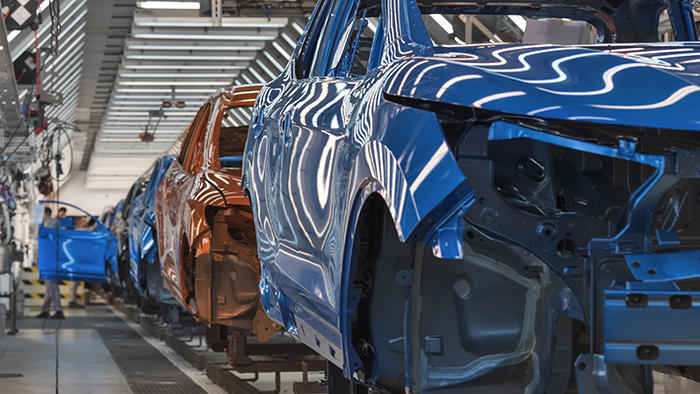
NAP2020 follows the goals of NAP2014 to make Malaysia a regional leader in manufacturing, engineering and technology, and ensure the sustainable development of the local automotive industry. It adds three new elements: Next Generation Vehicle (NxGV), Mobility as a Service (MaaS) and Industry 4.0 (IR4.0).
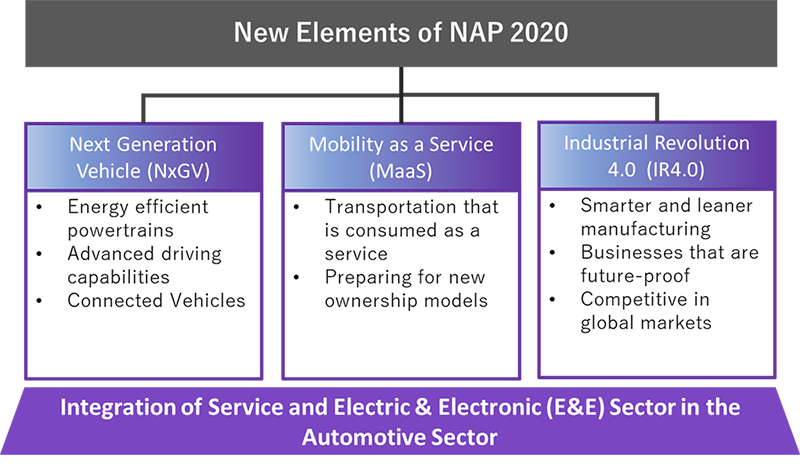
Source) Ministry of International Trade and Industry "National Automotive Policy 2020"
https://www.miti.gov.my/miti/resources/NAP%202020/NAP2020_Booklet.pdf
An input-output analysis conducted to develop NAP2020 found that Malaysia has an advantage in the services and electric and electronic (E&E) industries related to the mobility industry. With these strengths of the country, Malaysia has set up three challenging new elements. In order to continue to develop the automotive industry, which leads the mobility industry, in accordance with the vision of NAP2020, integration with the service industry and the electric and electronic industries is essential. As the component parts development roadmap that is important for next-generation automobiles shows, cooperation with the electric and electronic industries will deepen. In the future automotive industry, cooperation with the electric and electronic industries will be indispensable from the development stage. If such cooperation deepens, there is a possibility that consolidation will be promoted across industries, which will significantly change the supply chain of the automotive industry.
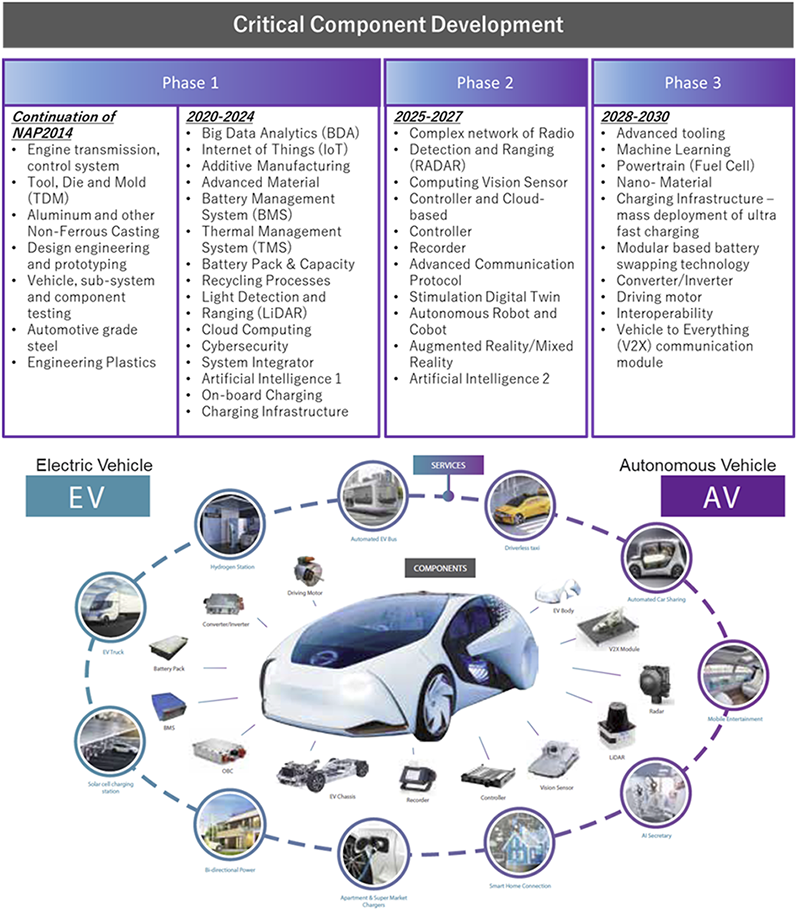
Source) Ministry of International Trade and Industry "National Automotive Policy 2020"
https://www.miti.gov.my/miti/resources/NAP%202020/NAP2020_Booklet.pdf